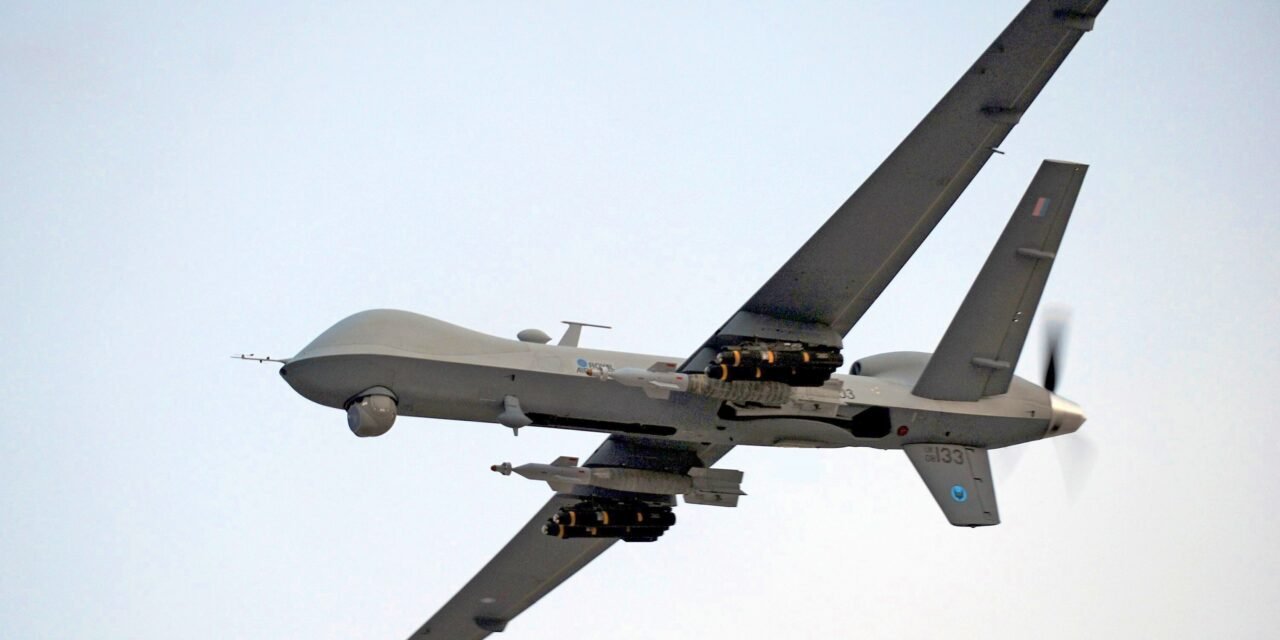Unmanned Aerial Vehicles (UAVs) are revolutionizing modern warfare by offering enhanced surveillance, precision strikes, reduced risk to human personnel, and cost-effective alternatives to traditional military platforms. Their versatility and advancements in technology make them a cornerstone of contemporary military strategies. Here’s how UAVs are transforming modern warfare:
1. Enhanced Surveillance and Reconnaissance
UAVs play a critical role in gathering intelligence and providing real-time situational awareness.
- Persistent Surveillance:
- UAVs can loiter over targets for extended periods, monitoring activities and gathering data.
- Example: The MQ-9 Reaper provides high-resolution imagery and signals intelligence (SIGINT).
- Wide-Area Coverage:
- Equipped with advanced sensors like radar and electro-optical/infrared (EO/IR) systems, UAVs can cover vast areas.
- Example: The RQ-4 Global Hawk can surveil entire regions in a single mission.
- Stealth Reconnaissance:
- Some UAVs are designed with low observability features for covert operations.
- Example: Lockheed Martin’s RQ-170 Sentinel was used in high-profile missions.
2. Precision Strikes and Targeted Operations
UAVs are increasingly used for precision strikes against high-value targets.
- Minimizing Collateral Damage:
- Precision-guided munitions deployed from UAVs reduce the risk of unintended casualties.
- Example: The MQ-9 Reaper can carry laser-guided bombs and Hellfire missiles.
- Real-Time Targeting:
- UAVs can identify, track, and engage targets in real-time, providing rapid response capabilities.
- Decapitation Strikes:
- UAVs are used in counterterrorism operations to eliminate high-value individuals.
- Example: UAV strikes have been pivotal in missions targeting terrorist leaders.
3. Reduced Risk to Human Personnel
UAVs allow military forces to conduct operations without putting pilots and soldiers in harm’s way.
- Remote Operations:
- Operated from secure ground control stations, UAVs keep personnel away from conflict zones.
- Example: UAV operators can pilot missions from thousands of miles away.
- Search and Rescue (SAR):
- UAVs can perform SAR operations in hostile environments, protecting human rescuers.
4. Cost-Effectiveness
Compared to manned aircraft, UAVs offer significant cost advantages.
- Lower Acquisition and Maintenance Costs:
- UAVs are cheaper to build, operate, and maintain than traditional fighter jets or bombers.
- Example: The operational costs of a Predator drone are far lower than those of an F-16.
- Scalability:
- Small, inexpensive UAVs can be deployed in large numbers to overwhelm enemy defenses or perform diverse tasks simultaneously.
5. Versatility Across Mission Profiles
UAVs are used for a wide range of military applications, adapting to diverse battlefield requirements.
- Logistics and Resupply:
- UAVs deliver supplies, ammunition, and medical aid to frontline troops.
- Example: Tactical UAVs like the Kaman K-Max are used for cargo delivery.
- Electronic Warfare (EW):
- UAVs equipped with EW systems can jam enemy radar, disrupt communications, and conduct cyber operations.
- Example: The ALQ-99 pod-equipped UAVs provide electronic attack capabilities.
- Decoys:
- UAVs can simulate manned aircraft or create false targets to confuse enemy defenses.
6. Asymmetric Warfare
UAVs are particularly effective in asymmetric conflicts where non-state actors or smaller forces engage larger militaries.
- Low-Cost Access for Non-State Actors:
- Commercially available UAVs are adapted for military purposes, such as surveillance or improvised explosive delivery.
- Example: ISIS has used off-the-shelf drones for reconnaissance and attacks.
- Counter-Insurgency:
- UAVs provide persistent surveillance and precise targeting in counter-insurgency operations.
7. Integration with Advanced Technologies
7.1 Artificial Intelligence (AI)
- Autonomous Operations:
- AI-powered UAVs can operate with minimal human intervention, identifying and engaging targets independently.
- Example: Swarming drones use AI to coordinate actions, overwhelming adversaries with distributed attacks.
- Enhanced Decision-Making:
- AI analyzes battlefield data in real-time, enabling UAVs to optimize mission outcomes.
7.2 Swarming Technology
- Coordinated Attacks:
- Multiple UAVs work together to execute complex missions, such as saturating enemy defenses.
- Example: DARPA’s OFFSET (Offensive Swarm-Enabled Tactics) program explores swarming tactics.
7.3 Advanced Sensors
- UAVs are equipped with cutting-edge sensors for enhanced battlefield awareness.
- Synthetic Aperture Radar (SAR) for imaging in all weather conditions.
- LIDAR for 3D terrain mapping.
8. Counter-UAV Operations
The proliferation of UAVs has also spurred the development of counter-UAV measures.
- Detection and Neutralization:
- Radar, acoustic sensors, and electro-optical systems are used to detect hostile UAVs.
- Directed energy weapons (lasers) and anti-drone jammers disable UAVs.
- Air Defense Systems:
- Systems like Israel’s Iron Dome or the U.S. Army’s M-SHORAD target UAVs in combat zones.
9. Challenges and Ethical Considerations
While UAVs offer significant advantages, their use also raises challenges and ethical concerns:
- Collateral Damage and Civilian Impact:
- Misidentification of targets can lead to unintended casualties.
- Autonomy and Accountability:
- The use of AI in UAV decision-making raises questions about accountability in autonomous attacks.
- Airspace Management:
- UAV congestion and deconfliction in crowded battlefields require advanced control systems.
Conclusion
UAVs are reshaping modern warfare by offering unprecedented capabilities in surveillance, precision strikes, and operational flexibility. Their cost-effectiveness, versatility, and ability to operate in high-risk environments make them indispensable tools for both state and non-state actors. As technologies like AI and swarming evolve, UAVs will continue to transform military strategies, creating new opportunities and challenges in the defense landscape.
Hashtags
#UAVTechnology #ModernWarfare #DroneWarfare #MilitaryDrones #UAVInCombat #InnovationAndAdvancements #NextGenUAVs #DroneInnovation #AdvancedMilitaryTech #FutureOfWarfare #TechInDefense #SurveillanceAndReconnaissance #AerialSurveillance #UAVReconnaissance #ISRTechnology #DroneMonitoring













